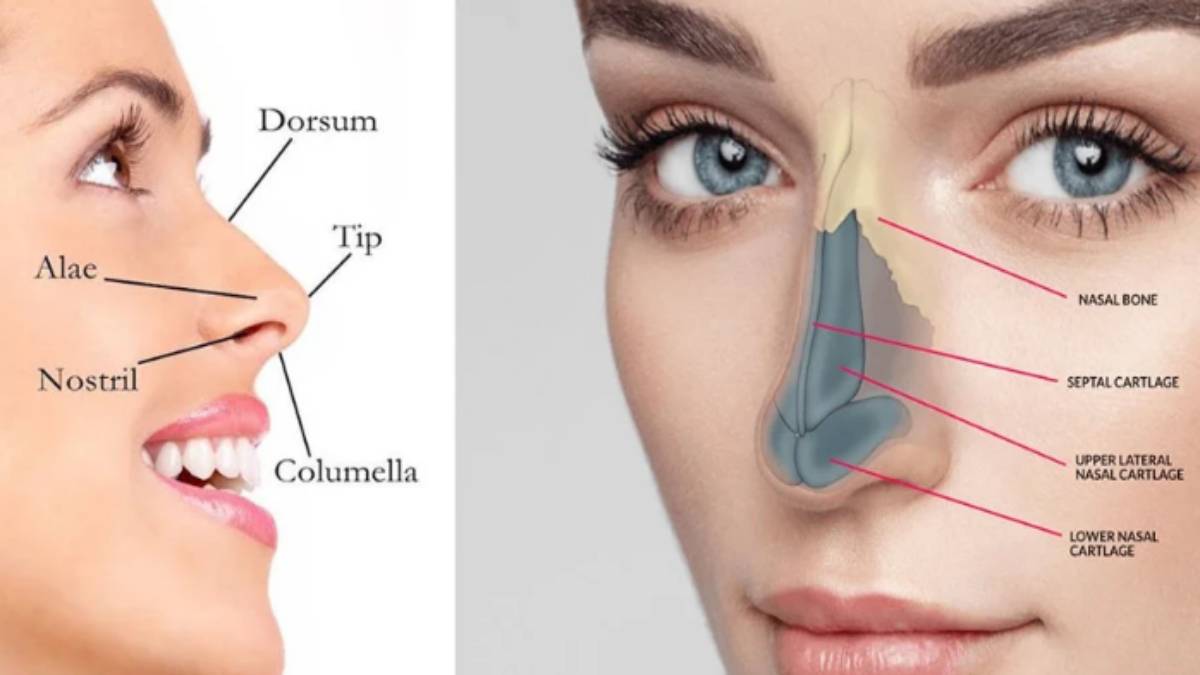🩺 Primary Rhinoplasty: Your Comprehensive Guide to Nose Surgery
If you’re considering primary rhinoplasty, you’re not alone. This procedure is one of the most sought-after cosmetic surgeries, offering both aesthetic and functional benefits. Whether you’re looking to enhance your facial harmony or improve breathing, understanding the ins and outs of primary rhinoplasty is essential.
🧠 What Is Primary Rhinoplasty?
Primary rhinoplasty refers to the first-time surgical procedure aimed at altering the shape, size, or functionality of the nose. Unlike revision rhinoplasty, which addresses issues from previous surgeries, primary rhinoplasty focuses on achieving the desired nasal appearance or improving breathing passages. The surgery can involve reshaping the bone, cartilage, skin, or all three to meet the patient’s goals.Mayo Clinic
🎯 Why Consider Primary Rhinoplasty?
People opt for primary rhinoplasty for various reasons:
-
Aesthetic Enhancement: To achieve a more balanced and harmonious facial appearance.
-
Functional Improvement: To correct breathing difficulties caused by structural issues.
-
Self-Confidence Boost: To feel better about one’s appearance, leading to improved self-esteem.American Society of Plastic Surgeons+4Mayo Clinic+4Cleveland Clinic+4
Understanding your motivations is crucial in setting realistic expectations and achieving satisfactory results.
🧑⚕️ Choosing the Right Surgeon
Selecting a qualified and experienced surgeon is paramount. Look for board-certified plastic surgeons with a specialization in rhinoplasty. Review their before-and-after photos, patient testimonials, and ensure they have a thorough understanding of facial anatomy. A good surgeon will listen to your concerns, discuss your goals, and provide a personalized surgical plan.Verywell Health+4Mayo Clinic+4Cleveland Clinic+4
🛠️ The Primary Rhinoplasty Procedure
Pre-Surgery Preparations
-
Consultation: Discuss your medical history, reasons for surgery, and desired outcomes.
-
Imaging: Photographs and possibly 3D imaging to plan the procedure.
-
Health Assessment: Ensure you’re in good health to undergo surgery.
Surgical Process
-
Anesthesia: General anesthesia is administered for comfort.
-
Incisions: Depending on the technique, incisions are made inside the nostrils (closed) or across the columella (open).
-
Reshaping: Bone and cartilage are sculpted to achieve the desired shape.
-
Closing Incisions: Stitches are used to close the incisions, and a splint is applied to support the new structure.American Society of Plastic SurgeonsMayo Clinic+1American Society of Plastic Surgeons+1
⏳ Recovery Timeline
Recovery varies among individuals but generally follows this pattern:
-
First Week: Swelling and bruising are most prominent; splint and stitches are removed.
-
First Month: Most swelling subsides, and daily activities can resume with caution.
-
Three Months: Significant improvement; however, some swelling may persist.
-
One Year: Final results become apparent as subtle swelling resolves.Allure+2American Society of Plastic Surgeons+2Cleveland Clinic+2Verywell Health
It’s essential to follow post-operative care instructions to ensure optimal healing.
⚠️ Potential Risks and Complications
While primary rhinoplasty is generally safe, potential risks include:
-
Infection: As with any surgery, there’s a risk of infection.
-
Bleeding: Minor bleeding is common; however, excessive bleeding may occur.
-
Scarring: Visible scars, especially with open rhinoplasty.
-
Breathing Issues: In rare cases, nasal passages may become obstructed.
-
Need for Revision: Some patients may require additional procedures to achieve desired results.Dr. Jay Calvert+8Mayo Clinic+8Cleveland Clinic+8Verywell Health+1American Society of Plastic Surgeons+1
Discuss these risks thoroughly with your surgeon during the consultation.
💰 Cost of Primary Rhinoplasty
The cost of primary rhinoplasty varies based on factors like surgeon’s expertise, geographic location, and complexity of the procedure. On average, in the United States, the cost ranges from $5,000 to $15,000. Insurance may cover the procedure if it’s deemed medically necessary, such as for breathing difficulties.
🧭 What to Expect During the Consultation
During your consultation:
-
Discuss Goals: Clearly communicate your reasons for seeking rhinoplasty.
-
Review Options: Understand the different surgical techniques available.
-
Set Expectations: Discuss potential outcomes and recovery timelines.
-
Ask Questions: Inquire about the surgeon’s experience, success rates, and any concerns you may have.
This is a collaborative process aimed at ensuring you’re well-informed and comfortable with your decision.
✅ Final Thoughts
Primary rhinoplasty can be a life-changing procedure, enhancing both appearance and quality of life. By choosing a qualified surgeon, understanding the process, and setting realistic expectations, you can achieve the results you’re hoping for. Remember, this is your journey, and being well-informed is the first step toward a successful outcome.
❓ Frequently Asked Questions
1. How long does the swelling last after primary rhinoplasty?
Swelling peaks within the first week and gradually decreases over the next few months. Most swelling subsides within three months, but subtle swelling may persist up to a year. Cleveland Clinic+1Dr. Erman Ak+1
2. Will I need to take time off work?
It’s advisable to take at least a week off to rest and recover. Avoid strenuous activities for several weeks as advised by your surgeon.
3. Are there non-surgical alternatives to primary rhinoplasty?
Yes, non-surgical options like dermal fillers can address minor imperfections. However, for significant changes, surgical rhinoplasty is more effective.
